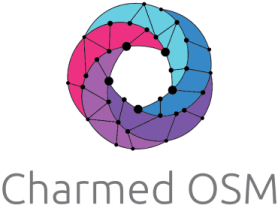Alex Chalkias
on 28 September 2020
Canonical at OSM Hackfest MR#9
The 12th OSM Hackfest, or OSM mid-release NINE (MR#9) Hackfest, is one for the books and Canonical happily shared the presenter floor with the rest of the Open Source MANO (OSM) community. The event spanned the whole week from September 7th to 11th, with Wednesday September 9th afternoon being used for the OSM Ecosystem day. As per the last two hackfests, the remote format allowed participation of hundreds of enthusiasts. During the preparation of the hackfest, it was agreed to keep the same theme as the last one, so participants were able to use OSM to manage and orchestrate workloads in an end-to-end open source mobile network solution with the Facebook Connectivity project; Magma.
Hackfest week overview
The first day of the hackfest was about introducing the end-to-end scenario, so the participants got a high-level view of the steps they would be following. Next, they were given an overview of the latest OSM features in release EIGHT, setup instructions for the hackfest environment and a session about building a virtual network function (VNF) deployment unit and adding monitoring capabilities to it. The next day was about the OSM support for Kubernetes and how to leverage OSM orchestration actions, or primitives as these are referred to by telcos, to deploy and operate network functions on virtual machines (VNFs). Wednesday was split between OSM primitives for Kubernetes-managed containers (KNFs) and then the Ecosystem day during the afternoon. Thursday focused on network slicing with OSM, placement optimisation, closed-loop operations and monitoring, enabling high performance in VNFs and underlay automation with SDN Assist. Lastly, Friday had a more hand-off approach, with OSM in production environments, an overview of the new OSM UI, a session on developer guidelines and a Q&A session with OSM experts. The full agenda and slides from all sessions can be found on the OSM wiki.

Canonical at the OSM-MR#9 Hackfest
Canonical’s OSM team attended the hackfest both as session presenters and as participants to the leadership and technical sessions. Mark Beierl, the OSM DevOps module design lead (MDL), drove the day 1 session that introduced the hackfest scenario that used Magma components, such as a web proxy.
David Garcia, the N2VC MDL, had multiple sessions during day 2; an introduction to OSM primitives, Juju relations and a 3 hour workshop on OSM orchestration of VNFs. OSM uses Juju as a core component and leverages operators to drive lifecycle management, workload configuration, daily operations and integration functions. Juju is a universal operator lifecycle manager (OLM) that exposes events to the operators and enables users to deploy simple to complex models of applications declaring business intent instead of dealing with piles of configuration scripts.
Day 3 continued with Garcia leading a workshop on PNF onboarding using charms. Charms are packages of operations code a.k.a operators allowing to drive applications. A charm can be reused across different scenarios and different substrates, from machines to Kubernetes and public clouds, an important feat in the large brownfield that is infrastructure in telecommunications. Canonical’s Dominik Fleischmann, followed Garcia’s session with a workshop on how to orchestrate KNFs using Juju. Participants learned to use charms to onboard network functions on containers.
Canonical concluded its presence at the OSM-MR#9 Hackfest on day 5 with a repetition of the session from the previous hackfest, ‘OSM in Production’, led by Product Manager, Alex Chalkias and other members of the community. The session was even more vibrant than the last time with many questions and comments from the audience. The community’s focus for a production-grade OSM intensifies, and the session was a good opportunity to assess the steps OSM release EIGHT took in that direction with more production-oriented features such as high availability and security landing in the project.
TSC and TECH sessions
A parallel track to the hackfest sessions, the technical steering committee (TSC) and TECH sessions are an integral part of every hackfest to ensure alignment of the technical leaders of the project around upcoming features and processes. Canonical’s CEO, Mark Shuttleworth, is a technical steering committee (TSC) member and is joined by Beierl and Garcia from Canonical’s OSM engineering team as MDLs in driving these sessions.
This time, we presented design proposals for new features, as well as improvements for features and processes, such as the integration of models external to OSM with VNFs deployed by it, the use of proxy charms to configure KNFs, use of Gitlab for the CI/CD pipeline and a plan to address disaster recovery scenarios.
OSM Ecosystem Day
The Ecosystem Day, an integral part of every hackfest, is for the community to learn about vendor-oriented solutions and projects. Among others, we had a demo of 5G Core network automation by OSM from Ulak Communications, we learned about vBNG orchestration using Juju by Benu networks and subscription and notification support in OSM by Tata ELXSI. We also presented a session on Charmed OSM, Canonical’s carrier-grade, hardened OSM distribution. Charmed OSM allows operators, GSIs and NEPs to move faster with NFV transformation through open-source technology and partner programmes.
Takeaways from OSM-MR#9 Hackfest
OSM release EIGHT was a big success for the OSM community, as it brought features and stability necessary for production use. The community is growing, something that is evident from the growing numbers of hackfest participants.
The next OSM hackfest is to be from the 30th November to the 4th December and the content has yet to be agreed upon. Join us there for another great OSM experience.



